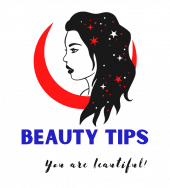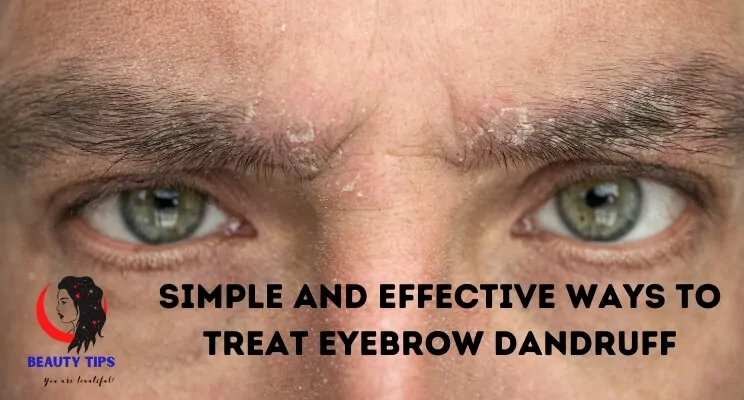Article Contents
Eyebrow Dandruff
If you’ve ever dealt with scalp dandruff, you may be aware of its annoyance. However, when dry flakes appear on the eyebrows, it can be even more frustrating.
Most people scrub it away to eliminate the white flacks, but doing so can worsen the problem.
The white patches on the skin are dandruff caused by a yeast infection, not dry skin. Dandruff can appear anywhere there are hair-bearing follicles, and it happens because of skin allergies, using irritating personal care products, cold weather, or a dry climate.
To get rid of dry skin, you need to take good care of your eyebrows. Dandruff on the scalp and eyebrow dandruff are similar and have the same problems. It happens when the flaky skin starts shedding.
There are many possible causes of dandruff on the eyebrows. Dry skin, seborrheic dermatitis, and contact dermatitis are examples of these.
A person can get a full diagnosis for persistent symptoms and get the right treatment for the underlying problem by consulting with a doctor or dermatologist.
Learn more about the signs, treatments, and complications of eyebrow dandruff in this article.
Symptoms of Eyebrow Dandruff
The appearance of eyebrow dandruff is similar to that of scalp dandruff. According to some studies, dandruff may affect as many as 50% of people.
Under and around the eyebrows, a person may have skin flakes that are whitish, grey, or yellow. A person may need to itch the area, which may cause a flush or inflammation.
Causes of Eyebrow Dandruff
Eyebrow dandruff can happen because of many different causes. Let’s discuss these causes in more detail below to understand and find solution to treat eyebrow dandruff:
1. Seborrheic dermatitis
The most prevalent inflammatory form of dandruff is seborrheic dermatitis. It happens with an infant too, and is known as a “cradle cap”—these white flakes form on the skin around the eyebrows and greasy, irritated skin.
Chronic seborrheic may be caused by a fungus known as Malassezia. The fungus thrives in the skin’s oily sebum and may spread due to weak immunity. You may need to do regular treatment for chronic symptoms.
2. Contact dermatitis
An allergic or irritating reaction on the skin is known as contact dermatitis. Contact dermatitis starts happening when the skin reacts to any ingredients of products like cleansers, conditioners, cosmetics, or the material that an individual uses as a cap or headscarf.
A rash that is itchy and bothersome can develop in contact dermatitis. Dandruff can result from the skin flaking off. If eyebrow dandruff develops after using a new product, discontinue the use and consult a dermatologist for allergen testing.
3. Dry skin
A person may commit a mistake by taking the extremely dry skin as dandruff. People who live in very dry regions with low temperatures and harsh conditions often experience dry skin and white flakes, known as dandruff.
If the person regularly moisturizes their skin, it may disappear quickly without suffering.
4. Eczema
Chronic eczema is a skin condition that causes skin patches to become irritated and inflamed. The condition may also present in the area of the eyebrows, with symptoms.
5. Psoriasis
Psoriasis is caused by an immune response that causes the skin to produce new cells more quickly, replacing and shedding old ones; as a result, scales or skin patches become irritated.
You can experience Psoriasis in many places on your body, including near the eyebrows in some cases.
Treatments for Eyebrow Dandruff
The best treatment for dandruff in the eyebrows depends on the cause, but regular moisturizing can help.
Some treatment options will be discussed in greater detail in the following sections.
1. Over-the-counter (OTC) or Medical treatments
All types of dandruff, including eyebrow dandruff, are primarily treated with over-the-counter (OTC) products like dandruff shampoos.
In some cases, ingredients like selenium sulfide and ketoconazole may help treat dandruff and its underlying causes, like too much oil or fungal overgrowth.
Other ingredients that could be beneficial include:
- Tar soap
- Salicylic acid
- Sulfur
- Sulfacetamide
Before rinsing out dandruff shampoo from the eyebrows, a person should lather the shampoo into the eyebrows and let it sit for a few minutes. Be careful not to get the lather in your eyes.
Using an over-the-counter anti-itch cream or antihistamine can help alleviate symptoms of contact dermatitis and prevent irritation and itching.
In some conditions, you may need prescription-strength medication, so visit a dermatologist.
If the results from over-the-counter dandruff treatments do not improve, it might be best to see a dermatologist for a stronger treatment. They suggest prescription-strength shampoo treatments with substances like selenium sulfide or ketoconazole. These are stronger than the OTC versions but similar in nature.
Home remedies
You can treat some mild cases of eyebrows dandruff using some home remedies.
However, skin reactions can occur even with natural products. Consequently, before applying the product to the skin, it is essential to test it on a small portion of the skin.
Natural oils like jojoba, coconut, and avocado oil can help moisturize the face in mild cases of dry skin.
2. Tea Tree Oil
Tea tree oil is an essential oil that is widely available and has some medicinal properties.
One study indicates that tea tree oil possesses potent antioxidant and antifungal properties.
You need to dilute the tea tree oil in a carrier. Additionally, use tea tree oil with extra caution when using it in close proximity areas of the eyes.
Before using tea tree oil, anyone who is unsure should talk to a dermatologist.
3. Almond Oil
You can eliminate dandruff by massaging your eyebrows with a few drops of warm almond oil. This can be done at night before you go to sleep. Almond oil massage can even stop eyebrow hair from falling out. Next morning, you can wash your face with normal water.
4. Aloe Vera Gel
Aloe vera gel is a great remedy for all sorts of skin problems. To get rid of dry, flaky eyebrows, apply pure aloe gel to your eyebrows and then rinse with lukewarm water.
5. Table Salt
Salt is an effective natural remedy for dandruff in the eyebrows. It gets rid of the patchiness and exfoliates the skin beneath your brows. Apply a light coating of table salt to your eyebrows and rub it gently.
6. Neem oil
Neem is very effective for treating all kinds of skin problems because it is antibacterial and anti-inflammatory. Apply some neem oil to your eyebrows to get rid of flakes and dead skin from dandruff.
7. Fenugreek Seeds
Most people with dandruff in their eyebrows also experience eyebrow hair loss. Amino acids found in fenugreek seeds make them excellent exfoliants.
Fenugreek seeds can be soaked overnight in water before being made into a paste in the morning. Leave the paste on for 15 minutes after applying it to your eyebrows. Then, you can use warm water to rinse it.
Eyebrow Dandruff Prevention
It may not always be possible to treat or prevent eyebrow dandruff. However, here are some general tips that may help you to prevent it in some cases.
You should try the following practices or solutions to stay away from or get rid of eyebrows dandruff:
- wear protective clothes while staying in harsh weather
- Avoid touching and picking the dandruff-infected area
- Avoid potential irritants that may cause skin irritation and allergies
- Drink plenty of water and keep hydrating your skin by applying moisturizer.
- Be aware of allergens that may cause dandruff and stop using them
- You can also apply good quality anti-dandruff shampoo on your eyebrows while using it on your scalp and hair.
- Use good quality SPF sunscreen to protect your skin from the sun’s rays
- Try to include gut-healthy foods in your diet because sometimes, even gut imbalance can trigger skin inflammation.
- Always keep your skin moisturized by applying good quality moisturizer.
Complications Relating to Eyebrow Dandruff
If a person doesn’t get treatment for their eyebrow dandruff, there might be some problems. Seborrheic dermatitis, for instance, can be a persistent problem for some people.
The symptoms may become worse or become more difficult to manage without treatment.
Additionally, there may be some long-term effects on the skin region, such as severe reactions in the form of scarring.
Depending on the underlying problem and how it affects the hair follicles, a person may lose some hair or have thin eyebrows.
When You Should See a Doctor
A dermatologist or doctor should be consulted by anyone concerned about symptoms like eyebrow dandruff, even though facial dryness is rarely a cause for concern.
A comprehensive diagnosis may help find a treatment for any issues causing the symptoms and eliminate the possibility of underlying issues.
The bottom line
The treatment for eyebrow dandruff will depend on the underlying cause, a common problem. Some conditions are persistent and necessitate ongoing treatment.
Dandruff on the eyebrows can also occur from an allergen or harsh conditions. These conditions may resolve with over-the-counter medication and by avoiding potential ingredients. If symptoms persist, it is essential to consult a dermatologist. They can assist in diagnosing the underlying problem and offer prescription-strength options for managing or treating symptoms.


